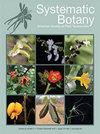Eugenia paranapanemensis(杨梅科),Pitanga amarela,是Eugenia教派的一把钥匙。巴西圣保罗州的Eugenia物种
IF 0.8
3区 生物学
Q4 EVOLUTIONARY BIOLOGY
引用次数: 0
摘要
摘要描述了圣保罗州大西洋森林季节性森林植被中的一个新物种,即火龙果,Eugenia paranapanemensis。我们根据形态学数据进行的分析表明,该物种属于Eugenia门。尤金妮娅。在尤金尼亚门的物种中。Eugenia分支,E.paranapanemensis可以通过其约25米的高度、具有光滑和短柔毛的托杯的花、褐色到赭色的毛状体以及成熟时黄色的果实来识别,最多有六个种子。本文章由计算机程序翻译,如有差异,请以英文原文为准。
Eugenia paranapanemensis (Myrtaceae), the Pitanga-amarela, and a Key to Eugenia sect. Eugenia Species from São Paulo State, Brazil
Abstract A new species popularly known as pitanga-amarela, Eugenia paranapanemensis, from Seasonal Forest vegetation in the Atlantic Forest of São Paulo state is described. Our analysis, based on morphological data, shows that this species belongs to Eugenia sect. Eugenia. Among the species in the Eugenia sect. Eugenia clade, E. paranapanemensis can be recognized by its height of about 25 m, flowers with a smooth and pubescent hypanthium, brownish to ochraceous trichomes, and fruits that are yellow when ripe, with up to six seeds.
求助全文
通过发布文献求助,成功后即可免费获取论文全文。
去求助
来源期刊

Systematic Botany
生物-进化生物学
CiteScore
1.80
自引率
10.00%
发文量
72
审稿时长
6-12 weeks
期刊介绍:
Systematic Botany Monographs is a series of peer-reviewed taxonomic monographs and revisions published the American Society of Plant Taxonomists. ISSN 0737-8211, ISBN prefix 978-0-912861. No; volumes of Systematic Botany Monographs must be ordered separately. ASPT membership inludes only a subscription to the quarterly journal Systematic Botany. SBM is supported by sales, author"s subsidies, and donations.
 求助内容:
求助内容: 应助结果提醒方式:
应助结果提醒方式:


